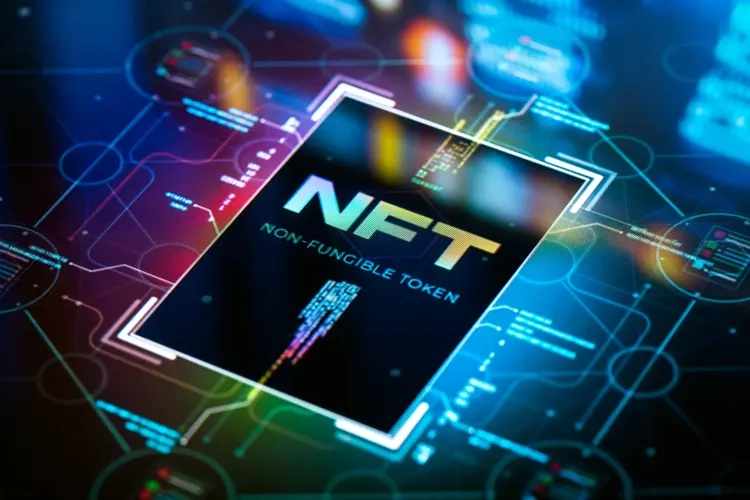In the fast-moving digital asset landscape, non-fungible tokens (NFTs) have become synonymous with exclusivity and status. But beyond their artistic or cultural appeal, the concept of rarity often defines the financial value of these tokens. Whether you’re a seasoned collector or a new investor, understanding how to determine the rarity of NFT is essential for making informed decisions in this volatile yet promising market.
This investigative article explores the mechanics behind NFT rarity, the tools professionals use, and how rarity shapes value in the ever-evolving Web3 economy.
Why NFT Rarity Matters
NFT rarity is not just about aesthetics. It’s an algorithmic and market-driven property that influences:
- Value: Rare NFTs generally command higher prices.
- Liquidity: Collectors actively seek rare items, leading to stronger resale potential.
- Cultural Status: Owning a rare NFT can signify prestige in online communities.
Rarity, in essence, becomes a form of digital scarcity, and scarcity drives demand.
Factors That Define NFT Rarity
1. Traits and Attributes
Most NFT collections, especially generative art projects like CryptoPunks or Bored Ape Yacht Club, are built from a set of attributes such as backgrounds, clothing, accessories, and facial expressions. The rarity of each trait—whether a golden crown or a laser-eye feature—directly impacts the NFT’s rarity score.
2. Edition Size
A 1-of-1 NFT is inherently rare compared to a limited edition of 1,000. Scarcity at the supply level plays a critical role in rarity determination.
3. Utility and Functionality
Some NFTs offer more than visual appeal. They may unlock access to exclusive communities, events, or gaming ecosystems. NFTs with unique utilities are often classified as rarer than those serving purely aesthetic purposes.
4. Historical Significance
Early NFTs, such as CryptoKitties or Rare Pepes, hold historical value due to their pioneering role. Their rarity stems not from traits but from their place in blockchain history.
5. Creator Reputation
NFTs created by high-profile digital artists like Beeple or Pak gain rarity through association with the creator’s influence.
Tools to Determine NFT Rarity
Determining rarity manually is almost impossible for large collections. Instead, specialized rarity-ranking platforms and blockchain explorers are the industry standard.
Rarity.tools
Rarity.tools is one of the most widely used platforms. It ranks NFTs based on their attributes, providing a numerical rarity score that collectors rely on when making purchasing decisions.
NFTgo.io
NFTgo.io goes beyond rarity scores by combining analytics on floor prices, volume, and holder distribution. It offers a comprehensive view of how rarity aligns with market dynamics.
Trait Sniper
Trait Sniper is a real-time rarity tool that alerts collectors during mint events. It’s particularly valuable for investors seeking rare NFTs immediately after launch.
Blockchain Data Analysis
Some professionals bypass third-party tools and analyze raw blockchain data. This approach offers full transparency but requires technical expertise.
Market Case Studies on NFT Rarity
Bored Ape Yacht Club (BAYC)
Within BAYC, an ape with a simple brown fur trait may sell near the floor price, while an ape with gold fur or a trippy background can sell for millions. Rarity scores are central to these price differences.
CryptoPunks
CryptoPunks with alien or zombie traits are exceedingly rare compared to those with common hairstyles. This trait-based rarity creates a tiered hierarchy of value across the collection.
Art Blocks
Unlike trait-based collections, rarity in Art Blocks comes from algorithmic generative art. Unique outputs with unexpected aesthetic qualities are prized as rare.
The Limitations of Rarity
While rarity drives value, it is not the sole factor. Overemphasis on rarity can lead to speculative bubbles. Market demand, cultural trends, and utility often override rarity scores. An NFT with low rarity may still hold significant value if it’s culturally relevant or tied to a strong community.
Internal Market Strategy for Collectors
If you want to navigate NFT rarity successfully, consider the following strategies:
- Combine rarity with community strength. A rare NFT in a dead collection may underperform compared to a common NFT in a thriving project.
- Track secondary sales. Historical sales data reveals whether rarity translates into actual demand.
- Diversify. Avoid overinvesting in rarity alone; balance with utility and project fundamentals.
FAQs on How to Determine the Rarity of NFT
Q1: How to determine the rarity of NFT in a new collection?
By using rarity tools like Rarity.tools or Trait Sniper immediately after mint, you can compare the attributes and identify rare NFTs early.
Q2: How to determine the rarity of NFT if no rarity ranking exists?
Analyze the collection’s metadata manually or review blockchain data for attribute distribution. Tools like NFTgo.io can also assist when rankings aren’t published.
Q3: How to determine the rarity of NFT across multiple collections?
Cross-reference rarity scores with floor prices, utility, and creator reputation. Platforms like NFTgo.io aggregate these insights.
Q4: How to determine the rarity of NFT for long-term value?
Look beyond traits—consider historical significance, cultural influence, and project longevity. Rarity alone doesn’t guarantee long-term appreciation.
Conclusion: Rarity in the Future of NFTs
Understanding how to determine the rarity of NFT is more than a technical exercise—it’s a lens into how digital scarcity reshapes value systems in Web3. As AI-generated collections, gaming ecosystems, and metaverse integrations grow, rarity will evolve from a purely trait-based system into a multi-dimensional framework involving utility, reputation, and historical context.
For collectors and investors, rarity remains a vital compass, but the smartest strategies will balance rarity with cultural and functional value. The future of NFTs may not be about owning the rarest—rather, it will be about owning the most meaningful.

